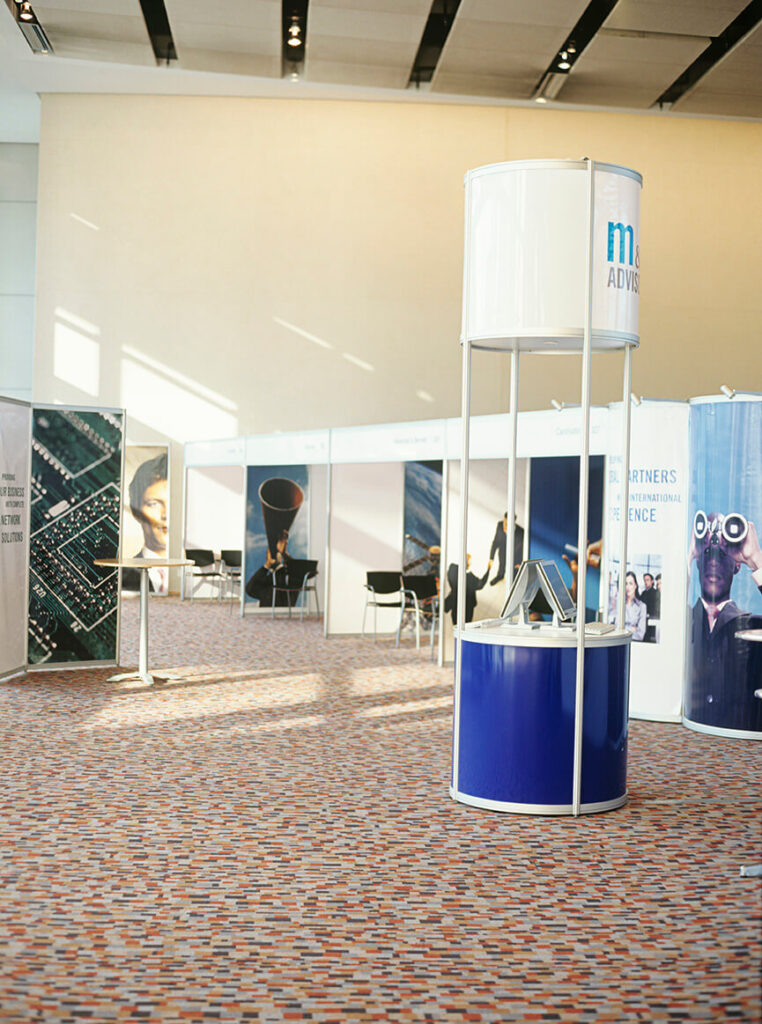In her highly acclaimed bestselling book, “The Art of Gathering,” Priya Parker argues that while the gatherings in our lives tend to be lackluster and unproductive, they don’t have to be. Widely known as the voice of what it means to gather in this world today, Parker and her book have become mandatory reading for business professionals seeking to excel in making meaningful, memorable engagement.
One of Julie Lewis’ favorite quotes in the book reads, “Ninety percent of what makes a gathering successful is put in place beforehand.” It is a quote the U.S. Tradeshow and Events Manager for CooperVision revisits often. “This is the iceberg of the event world—90 percent of the work has happened, so you see the majestic 10 percent above the surface. That 90 percent has to happen. The other 10 percent has to be flawless, and look effortless and elegant.”
“Collaborate, get insight and guidance, and do your research. Find out what other successful companies are doing in event branding.”
Ray Sheehan, Owner, Old City Media
In her years of managing trade show floors and sponsorship opportunities with large scale events associated with the optometry brand leader, the best activations have been the ones that are authentic to the brand, and feature an element of memorability and uniqueness. For example, if you are in retail space, set a unique tone that mimics your store fronts and branding. Give your audience a reason to engage. “If you can spark human interest, you can spark conversations,” Lewis says. “That leads to leads for your sales team.”

Lewis recalls a 10×20 booth as a first-time exhibitor on a show floor she was managing that exhausted its budget on its floor footprint and exhibit services. The booth’s dated backdrop and standard issue tables and chairs did not help. The experience still serves as a drastic example of what can happen when that 90 percent is not executed properly.
One of the most significant ways to get a jump on the 90 percent rule starts with your planning. For any brand, that means being able to connect the dots of the message and messaging you want to convey. And that takes finding a partner who can help organize the little things (before they become big problems).
“I have found that the best path to consistency in event branding starts with a consolidated budget and a collective agreed direction and look,” Lewis says. “I think honing in on where these worlds meet, the digital space of interaction and engagement with the in-person physical space, is a sweet spot that live events can bring to the table that is irreplaceable. We just have to find the right ratio for the perfect mix of this; it is the event professionals’ next great endeavor in my opinion.”
Do you stand out?
As a veteran of the trade show circuit, Ray Sheehan can share scores of stories on the ins and outs of exhibiting and attending. But if you ask the owner of the digital marketing agency Old City Media, he will say that above all else, the key to any trade show is setting yourself apart from the competition. And while that sounds simple enough, the truth, as Sheehan sees it, is that too many trade show exhibitors overthink the process.
“You don’t want to complicate things or over-engineer your branding,” Sheehan says. “If you try to do too much and not be laser focused, it won’t work. At times, companies try to do too much. For me, it is a simple branding technique: What’s your story or point of difference? Focus on that. If you don’t, you run the risk of having a broken process. And once the process is broken, things can go sideways. From a sales point of view, or even a customer service point of view, you want to make sure each part of the process has been clearly defined.”

Old City has had lots of success with simple, easy-to-understand branding. If you get too complicated, over-creativity can get in the way of things, or worse, hurt your messaging. Some good rules to follow: simple branding, quick message, call-to-action and data collection, which is your lead in the funnel. “Collaborate, get insight and guidance, and do your research. Find out what other successful companies are doing in event branding. Who are the industry leaders in other business verticals? This will help get your creative juices flowing for an overall amazing end product.”
As an avenue for key revenue generation, events are critical to many brands. In fact, some brands wouldn’t survive without them. More than just a function of the business, they can and should be an essential piece of your business model. That said, it all starts with branding. “Brand guidelines are extremely important for alignment and consistency,” Sheehan says. “All companies should have a Brand Guideline or Brand Book. This information is paramount when heading out into the field. Those tools or guidelines will keep everything uniform.”
How did we do?
In the time following the trade show experience, many internal conversations are held about the importance of measuring the success of an event. Sometimes it is the number of leads at the booth, followed by the tracked sales days, months or even years out. Other times success is measured by the number of people in the booth or room, or the digitally tracked impressions. With such a wide swath of data to mull over, no two brands grade their performances the same way.
“I have found that the best path to consistency in event branding starts with a consolidated budget and a collective agreed direction and look.”
Julie Lewis, Tradeshow and Events Manager, U.S., CooperVision
“Statistics, metrics and anecdotal measurement all have a place in the evaluation of events and their success,” Lewis says. “I think the amalgamation of these pieces tell a story, and if you have a robust story to tell at the end of your presence at an event, you have success. You had people listening, learning, growing, asking, engaging, enjoying, collaborating and all of that. You built trust, instilled value and made the case for why your product, service or widget is what they will buy, and buy again.”
And while the golden egg is the new and repeat customers, Lewis says the learning is equally as important. “I think the next step is keeping your brand and messaging front of mind for those invested customers—ones you want to make ambassadors for your brand. Events are a great way to mix those who are already your best customer with those who are just learning about you.”
The ROI, as many brands find, is in the interaction, which inarguably, can be immeasurable.
